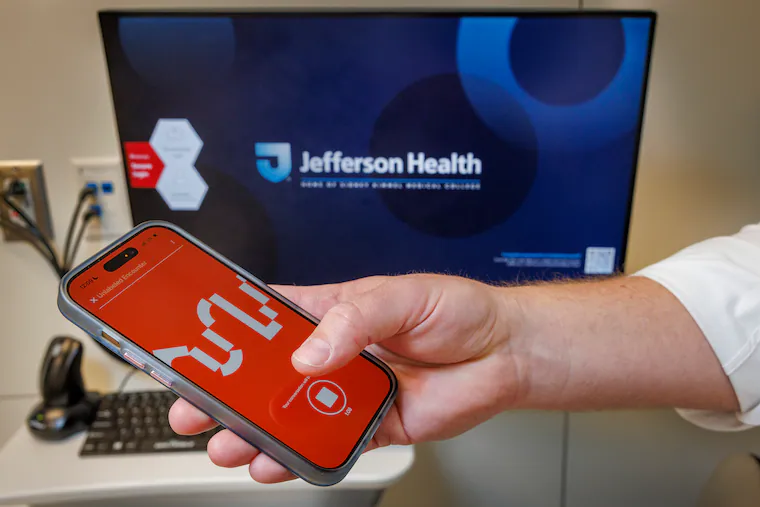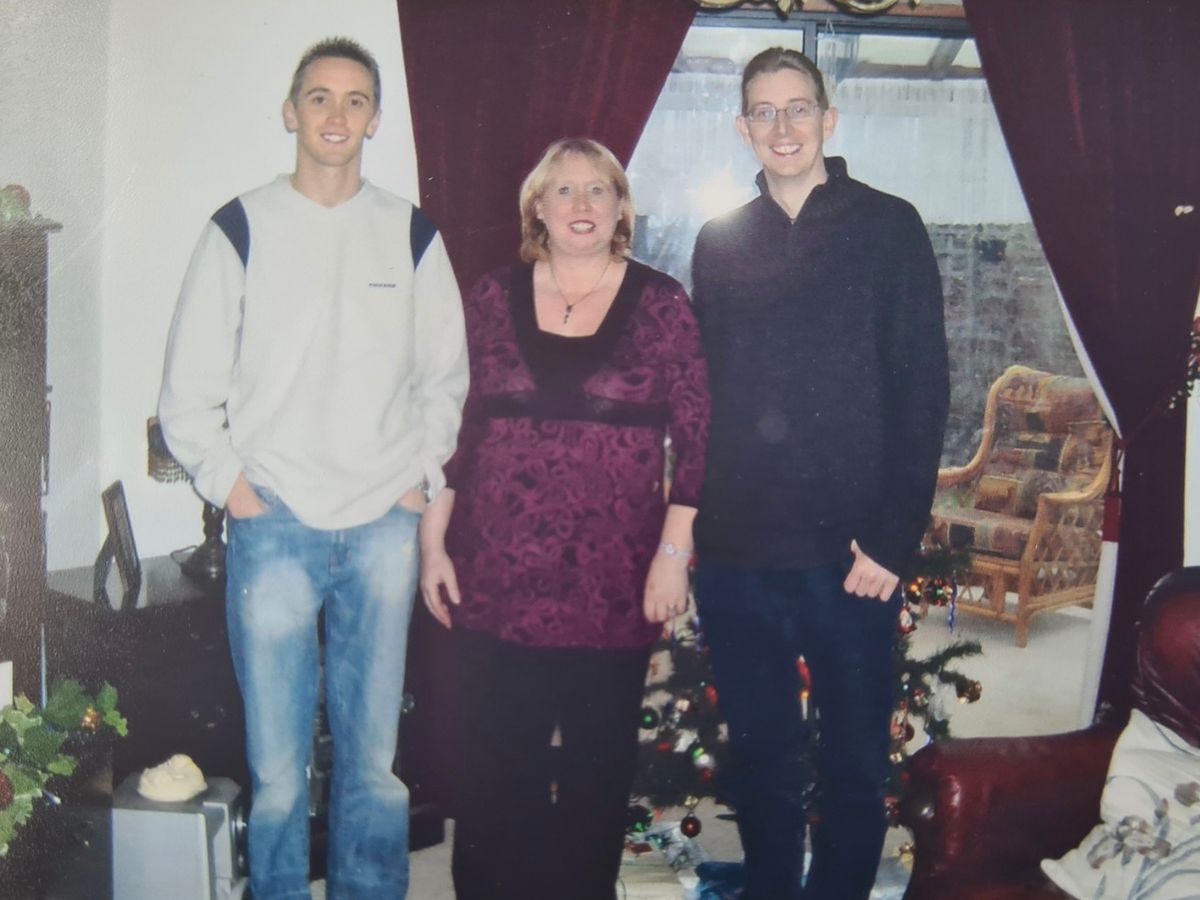Copyright The Philadelphia Inquirer

Bracken Babula starts patient visits these days by closing the exam room door, and asking if they mind him recording their conversation. He hits a button on his mobile phone, checks that it is recording, and sits back in his seat to listen. In the past, the Jefferson Health primary care doctor would have spent the visit furiously typing notes while listening to his patient, unable to make consistent eye contact and fully engage in conversation. But for the past year, he has been using an artificial intelligence tool that does the listening and note-taking for him. When the visit is over, Babula ends the recording. Within minutes, a note record appears on his computer screen, organized by sections, summarizing the main points of their conversation, the different medical issues discussed, and recommended next steps. “I can face my patient and talk to them and hear their whole conversation,” Babula said. “I spend the same amount of time, but have a much higher quality note than before.” Health systems in Philadelphia and across the country have been adopting artificial intelligence for years in ways invisible to patients, such as using the technology to comb radiology scans for signs of cancer, or improve appointment scheduling. Now so-called ambient listening and AI scribes are among the artificial intelligence tools that patients are beginning to see in exam rooms. The technology has significant appeal in healthcare, where research shows doctors spend more time documenting patient exams and maintaining medical records than they do interacting with their patients. A recent study by University of Pennsylvania researchers found the tools can reduce the amount of time doctors spend on paperwork at home, after their work day is over. Earlier this fall, Jefferson announced a plan to reclaim 10 million hours of clinicians’ time by 2028 through artificial intelligence tools including ambient listening that can help doctors work more efficiently. Some 1,200 Penn Medicine providers have been using an AI scribe to assist with note-taking. But medical ethicists warn that health systems must be cautious of a fast-growing healthcare AI market that is largely unregulated by the U.S. Food and Drug Administration, which oversees medical devices and medications. The FDA’s digital health committee is exploring ways it could regulate AI in medical devices in the future. Recording errors could lead to incorrect medication doses, for example, and the scribe may struggle to understand foreign accents. Health systems must also ensure that patients consent to being recorded and that the private health information they share is secure. “It puts a lot of onus on the health systems to be careful adopters and kick the tires,” said I. Glenn Cohen, a bioethicist and deputy dean at Harvard Law School. » READ MORE: I was an AI scribe-skeptical doctor. And then I actually tried it. Benefits of ambient listening Ambient listening and AI scribe tools do more than simply record a conversation and provide a transcript. The programs can distinguish individual voices and omit details that aren’t relevant — such as brief small-talk about the weather or a pet. When the conversation is over, the technology produces a comprehensive medical note. The record is no simple transcript: It summarizes the most important details, broken into sections about each medical condition discussed, the doctor’s recommendations, and what next steps the doctor said the patient should take. The approach has changed the way Dina Capalongo, an internal medicine doctor at Penn, interacts with her patients, because her attention is no longer divided between listening to her patients and taking fastidious notes. After greeting them, she explains the AI scribe tool and asks if they mind if she records their visit — most patients agree. She opens up their electronic medical record through a secure app on her phone, then finds the green button to begin recording. Capalongo has been using for about a month the AI scribe tool Penn designed in-house. She finds herself explaining to patients parts of the exam that she needs to narrate, so that it can become part of the scribe tool’s record. The process helps patients better understand what she’s doing, she said. “They’re hearing me say, ‘Heart is regular,’ and knowing why I’m touching the inside of their leg,” she said. When the exam is over, Capalongo ends the recording and within minutes — usually before she leaves the room — the program pops up a written medical note on her computer screen. The scribe tools require doctors to review all their AI-created notes for any errors and approve them before they become a formal part of a patient’s record. Capalongo and Babula, the Jefferson doctor, both find the AI-created notes more comprehensive than what they may have written on their own, and rarely have errors. Doctors may correct the spelling of a colleague’s name or delete an irrelevant detail. A Penn study involving 46 providers found that AI scribe and ambient listening tools contributed to a 20% decrease in the time doctors spent interacting with electronic health records during and after patient visits. The amount of time they spent on documentation after work hours dropped by 30%, according to findings published in JAMA Network Open in February. Capalongo was not involved in the study, but said she thinks that the tool has also saved her time. Challenges of AI in healthcare Despite the promise of greater efficiency for doctors and improved patient interactions, ethicists caution that ambient listening and AI scribe tools can have drawbacks. » READ MORE: Penn used an AI tool matched a patient’s rare disease with a common inflammation drug. He’s been in remission for over two years. Doctors who don’t read over the AI-created notes carefully could miss errors, such as an incorrect medication dosage. As using AI notes becomes routine to clinicians, the likelihood that they read over the details quickly or skim the notes may increase over time, said Cohen, who wrote an invited response to the Penn study that was also published by JAMA. Less sophisticated tools may misinterpret foreign accents, leading to inaccurate notes. Artificial intelligence tools such as ambient listening also pose privacy challenges. Many states, including Pennsylvania, require both parties to agree to voice recording, which means doctors must be trained on how to talk to patients about the technology and answer their questions. Another challenge for health systems is how to handle sensitive topics that patients may not want recorded, such as a discussion about domestic violence. The technology could also impact how patient medical records are used in medical malpractice cases, as they provide the most comprehensive history of what patients discussed with their doctors, when details of their health were first documented, and the steps providers took in patient care. But ambient listening tools do not necessarily create a verbatim transcript — rather they use artificial intelligence to compose a note that highlights the most important points, which can later be edited by the doctor. “You’re producing multiple records — the recording, the transcription summary, and then the final version the doctor has approved,” he said. “What’s the policy on retention of these documents?” Penn and Jefferson forge ahead with AI Penn and Jefferson said they are aware of the risks of AI and are approaching the technology cautiously. Hospital administrators are bombarded with AI product pitches, and must carefully vet which tools are safe enough for patients and worth exploring, said Baligh Yehia, president of Jefferson Health. AI tools that can improve the connection between patients and doctors by taking away administrative burdens are his priority. Jefferson expects to introduce ambient listening tools in its emergency departments soon. It’s already being used in primary care and other outpatient offices. The system is also considering how ambient listening could be used to improve nurse hand-off notes. As such tools become more widely available to Jefferson doctors, the system is training providers to have in-depth conversations with patients about how the technology works, and how their private health information is protected. Penn first experimented with AI in administrative settings, such as record-keeping, billing, and appointment scheduling. The system wanted to test the technology in ways that did not directly affect patient care, said Mitchell Schnall, a radiologist and senior vice president for data and technology solutions at Penn. When patients call the general Penn Medicine number, an AI assistant asks them to describe what they need — “cancel an appointment” or “billing question” — and directs them to the right place, reducing phone wait times. More recently, Penn has begun introducing AI into the exam room. The system built its own scribe, now in use by some 1,200 providers in ambulatory and outpatient offices. Penn is still exploring how ambient listening could benefit emergency departments, where efficiency is key but lots of background noise could muddy recordings. Using the tools safely, local leaders say, also requires ensuring the technology doesn’t replace human touch in healthcare. “There’s a human in the loop every time,” he said. “You want to make sure everything is accurate and you’re acting responsibly.”



